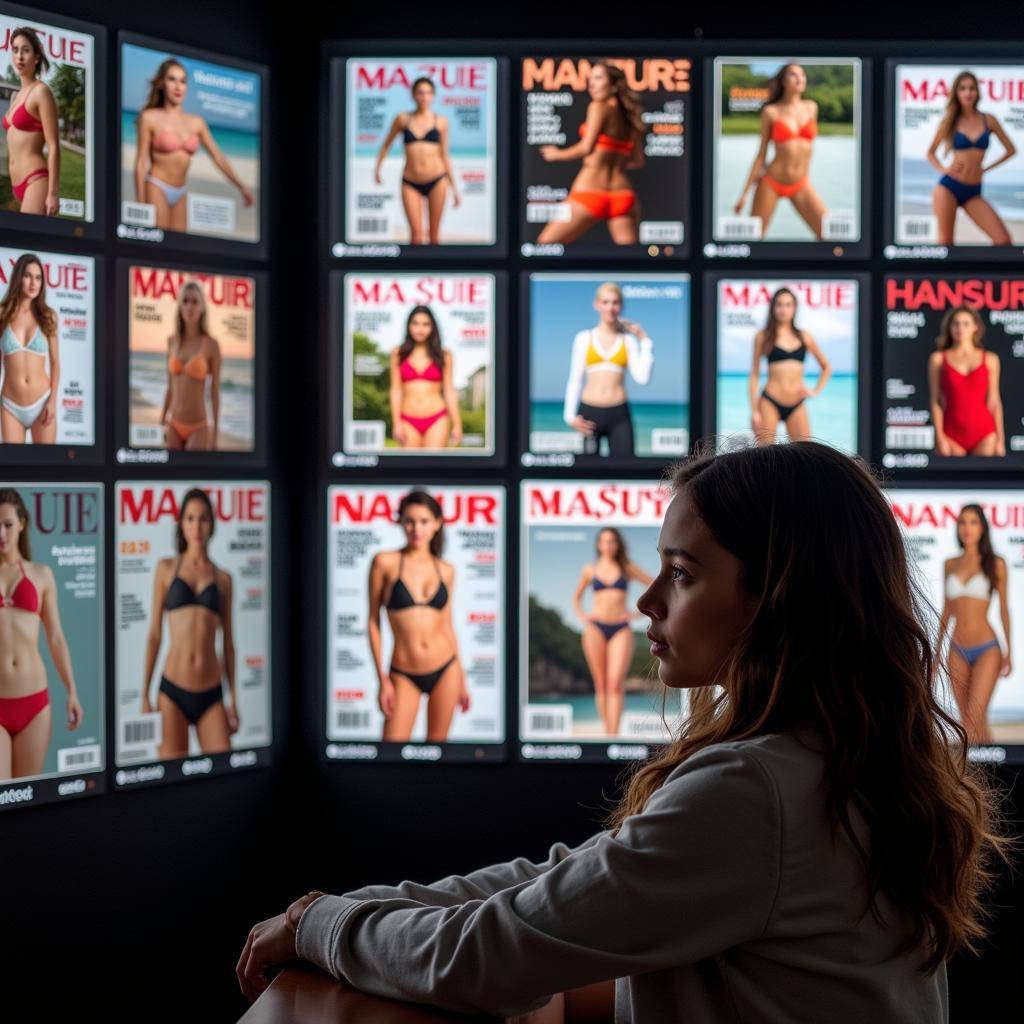The topic of media representation and its effects on body image has become increasingly prevalent in IELTS Writing Task 2 examinations. Based on analysis of past papers and current trends, this theme appears in approximately 15% of all social impact questions, making it a crucial area for IELTS candidates to master. Studies have shown that effects of social media on body image particularly resonate with test-takers from Asian countries.

Sample Question Analysis
Some people believe that the media’s representation of body image has a negative impact on young people’s self-esteem. To what extent do you agree or disagree with this statement?
Question Breakdown:
- Topic: Media representation and body image
- Task: Opinion essay (agree/disagree)
- Focus: Impact on young people’s self-esteem
- Key areas to address: Media influence, body image, youth psychology
Band 8.5 Sample Essay
The pervasive influence of media representation on body image has sparked considerable debate, particularly regarding its impact on youth self-esteem. In my opinion, I strongly agree that media portrayals of idealized body standards significantly damage young people’s self-worth, and this essay will explore the primary reasons behind this perspective.
Firstly, the media’s constant promotion of unrealistic beauty standards creates an unattainable ideal that young people inevitably fail to achieve. When examining the influence of the fashion industry on body image, we see that magazines, advertisements, and social media platforms consistently showcase artificially enhanced images of “perfect” bodies. This relentless exposure to manipulated imagery leads young individuals to develop distorted perceptions of normal body appearances, ultimately fostering feelings of inadequacy and self-doubt.
Moreover, the digital age has intensified this issue through social media platforms that encourage constant comparison and validation-seeking behavior. How social media affects the perception of beauty standards is particularly evident in the rising use of filters and editing applications, which further disconnect young people from accepting their natural appearance. The pressure to maintain an idealized online presence can lead to anxiety, depression, and eating disorders among vulnerable youth.
To address this concerning trend, I believe that media literacy education and regulatory measures should be implemented. Schools could incorporate programs teaching students to critically analyze media representations, while authorities could mandate disclaimers on edited images. Additionally, promoting diverse body representations and authentic content could help create a more balanced media landscape.
In conclusion, the media’s portrayal of body image undeniably poses significant risks to young people’s self-esteem. Unless concrete steps are taken to counter these harmful influences, the psychological well-being of future generations remains at stake. (291 words)
Band 6.5 Sample Essay
I totally agree that media shows body image in a bad way which hurts young people’s confidence. This is a big problem in today’s world where social media is everywhere.
First, magazines and TV always show very thin models or muscular actors. These pictures are usually edited to look perfect, but young people don’t know this. They think they must look like these images to be accepted. The impact of social media on body image issues makes young people feel bad about themselves when they can’t look the same.
Second, social media makes this problem bigger because everyone can post perfect pictures. Many teenagers spend hours trying to take the right selfie and use filters to look better. When they see their friends posting perfect pictures, they feel pressure to do the same. This makes them unhappy with their real appearance.
I think we need to teach young people that most media images are not real. Schools should have classes about this topic. Also, famous people should show more real pictures without editing. This would help young people feel better about themselves.
In conclusion, media really affects how young people think about their bodies in a negative way. We need to do something to help them feel more confident about their natural looks. (169 words)
Key Vocabulary
- pervasive (adj) /pəˈveɪsɪv/ – spreading widely throughout an area or group
- idealized (adj) /aɪˈdɪəlaɪzd/ – representing something as perfect or better than reality
- self-worth (n) /ˌselfˈwɜːθ/ – confidence in one’s own value as a person
- manipulated (adj) /məˈnɪpjuleɪtɪd/ – altered or controlled to serve one’s purpose
- validation-seeking (adj) /ˌvælɪˈdeɪʃən ˈsiːkɪŋ/ – behavior aimed at getting approval from others
For additional practice, consider writing your own essay about how social media impacts body image issues and share it in the comments section for feedback. Expected future topics might include the role of celebrities in promoting body positivity or the impact of beauty standards on mental health.